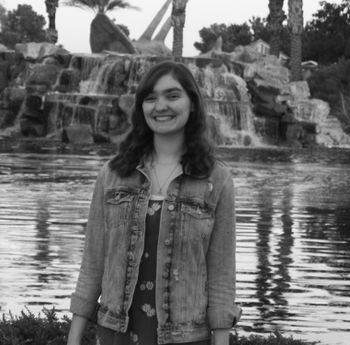Universities push radical gender ideologies around Transgender Day of Remembrance
Programming included a photography display, an art exhibition, and a ‘gender diversity’ dashboard.
Campus Reform continues to report on universities imposing policies regarding pronouns and gender identity on students.
Universities across the country recently hosted events for Transgender Day of Remembrance, which occurs every Nov. 20.
But some institutions used the day as an opportunity to further advance transgender ideology within the student population and general public.
Below are some of the most radical events and initiatives sponsored by universities during the past week.
Photography display of “transgender couples and families” sponsored by NYU
NYU put together a “Transcending Love” photo gallery to “[offer] an intimate glimpse into the relationships of transgender, non-binary, and gender nonconforming couples across the USA.”
📷 On view at Schwartz Plaza through Feb. 20: “Transcending Love.” a photo exhibition that offers an intimate glimpse into the relationships of transgender, non-binary, and gender nonconforming couples with the aim of educating through visibility: https://t.co/CpjTmntbck pic.twitter.com/uBbgm89wpR
— New York University (@nyuniversity) November 21, 2021
Each photo is accompanied by stories explaining how becoming “transgender” impacted each relationship. According to the university news release, the display was co-sponsored by the Provost’s Office, the NYU LGBTQ+ Center, and the Stern School of Business.
The gallery is off-campus at the Kimmel Windows Gallery in New York City’s Schwartz Plaza and will remain up until February 20th.
Youth “gender affirming care” webinar at the West Virginia University School of Social Work
On Nov. 16, the WVU LGBTQ+ Center and School of Social Work hosted a webinar on “best practices for supporting gender diverse youth.”
Topics included children accessing transitioning procedures, coming out, mental health, and the importance of “inclusivity within faith communities.”
“West Virginia has the highest percentage of transgender youth in the nation – the Williams Institute estimates that 1.04 percent of West Virginians 13- to 17-years-old identify as transgender,” WVU Executive Director of Communications April Kaull told Campus Reform.
“The LGBTQ+ Center at West Virginia University provides supportive programming and academic resources to students, faculty, staff, and community members on issues pertaining to the LGBTQ+ community,” Kaull said.
Evening of LGBTQ speakers, performances, reflection at CSU Fort Collins
On Nov. 18, CSU Fort Collins’ Pride Resource Center held “an evening of speakers, performances, reflection, and healing” for students to honor Transgender Day of Remembrance.
One speaker shared a poem about LGBTQ ancestors. Representatives from the Black African American Cultural Center followed with the presentation of a libation, which they explained as an “offering to a spirit, a deity, or soul of a person who has deceased.”
The night closed with a presentation of transgender lives lost and songs from Colorado’s Trans Community Choir. The full event is available to view here.
“Gender diversity” data dashboard launched at Humboldt State University
Humbolt State University announced a “gender diversity” dashboard on Nov. 16, which was developed by the school’s Transgender, Gender Non-binary & Gender Non-conforming Task Force.
University spokesman Grant Scott-Goforth told Campus Reform that the goal of the dashboard was “increasing trans visibility and respect on campus.”
“The dashboard is a keystone effort that allows students to self-identify their gender identity and gives University departments and leadership an ethical way to better understand trans+ representation,” he said.
According to the data, the student population includes 13 “trans women,” 65 “trans men,” 159 “genderqueer,” 125 students who declined to state their gender, 31 students who identify as “another,” and 39 students who are “not sure” how they identify, along with 2,198 men and 3,109 women.
However, the dashboard includes a note acknowledging that data may change when students change their gender identities.
“At Humboldt State University, we recognize identity categories are fluid, diverse, and dynamic. These data represent a snapshot of a particular moment,” it states.
Clothing swap with binder fittings at Western Illinois University
In addition to a candlelight vigil, Western Illinois University LGBT*QA Resource Center sponsored an assortment of events from Nov. 15-19. One called the “Trans* Day of Support” featured a clothing swap with binder fittings and crafts, sponsored by the campus’ QCloset.
“While The Qloset was promoted during the 2021 Trans Awareness Week activities, The Qloset is open year-round for transgender, non-binary, and gender non-conforming students to get the clothing they want and need to express themselves and their identity,” Assistant Director of University Communications Alisha Looney told Campus Reform.
Another event, called “What’s the T*,” invited students to discuss trans identities while sharing snacks.
Trans community art exhibition set up at the University of South Florida
USF’s new “Visibility & Remembrance: Standing with the Trans* Community” art exhibition was launched by the Department of Women’s and Gender Studies. It showcases 31 artists from around the world who “reflect on the experiences, representations, identities and politics of being trans.”
One piece titled “Parenthood” features a pregnant man. Another painting called “Trans Enough” displays colors of the trans flag blurring to show “there are so many genders between and outside of Male and Female.”
University spokesperson Althea Johnson directed Campus Reform to a statement from project coordinator Sarah Jünke.
“We believe in the power of art to affect social discourse,” Jünke said. “The last few years have seen an escalation in misinformation and attacks against the rights of people who are transgender, and we hope that the exhibit can help to change this. Through the voices in this exhibit, we hope to make the experiences of people who are trans more visible and to foster solidarity between trans people and allies.”
The exhibit runs through Mar. 31, the Transgender Day of Visibility, and can be viewed both in-person and online.
Campus Reform reached out to every university mentioned above; this article will be updated accordingly.
Follow the author of this article on Twitter @katesrichardson.

